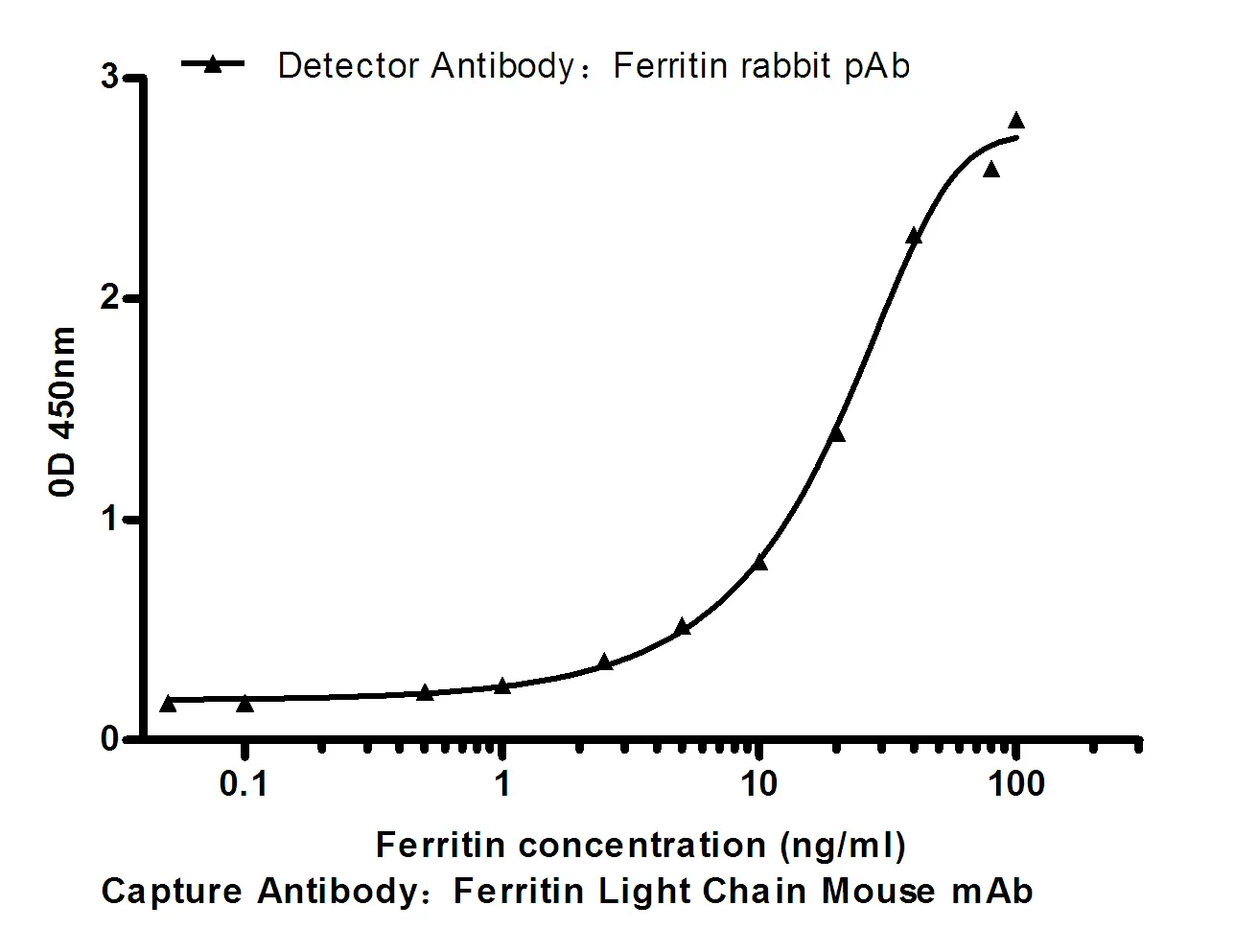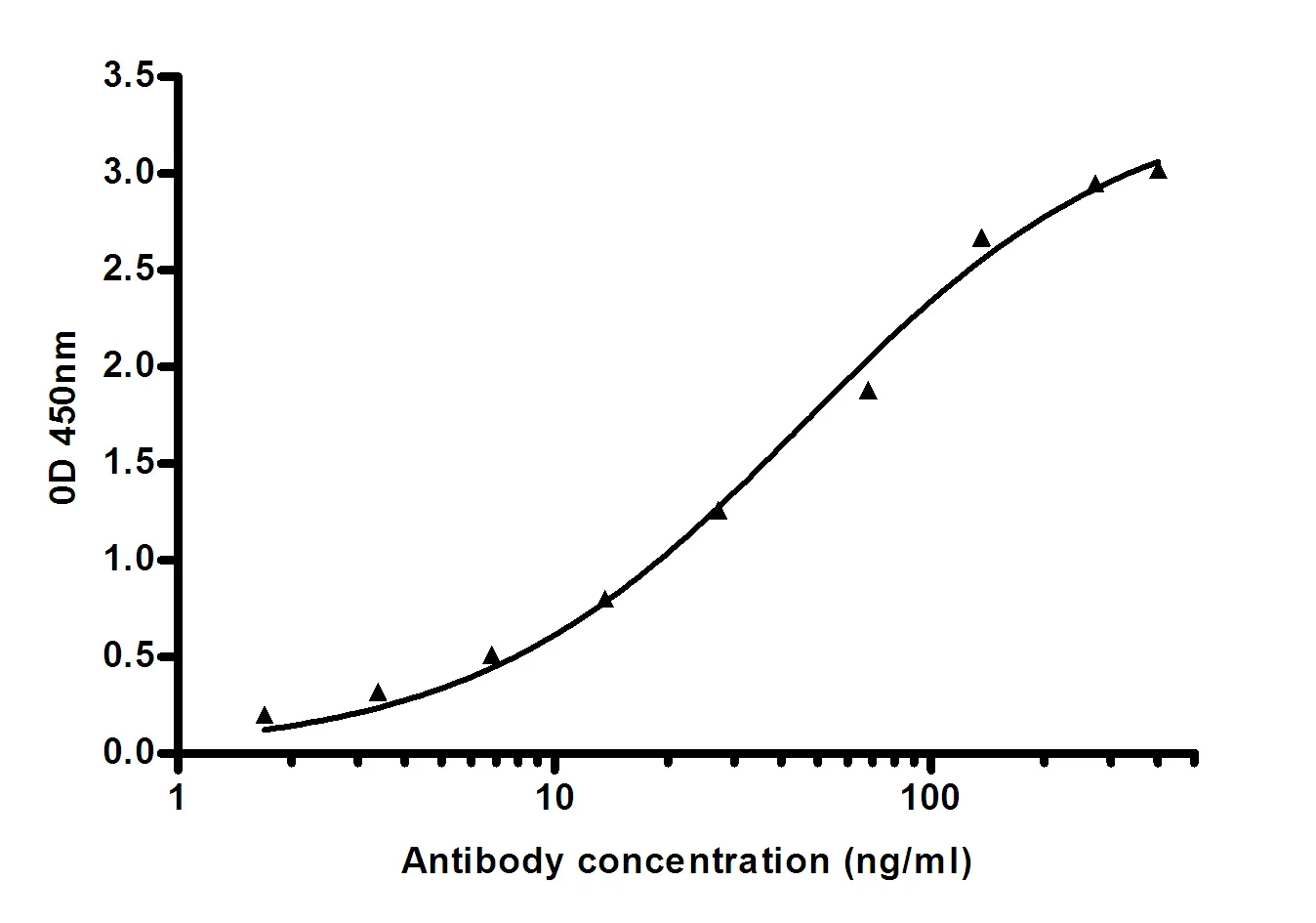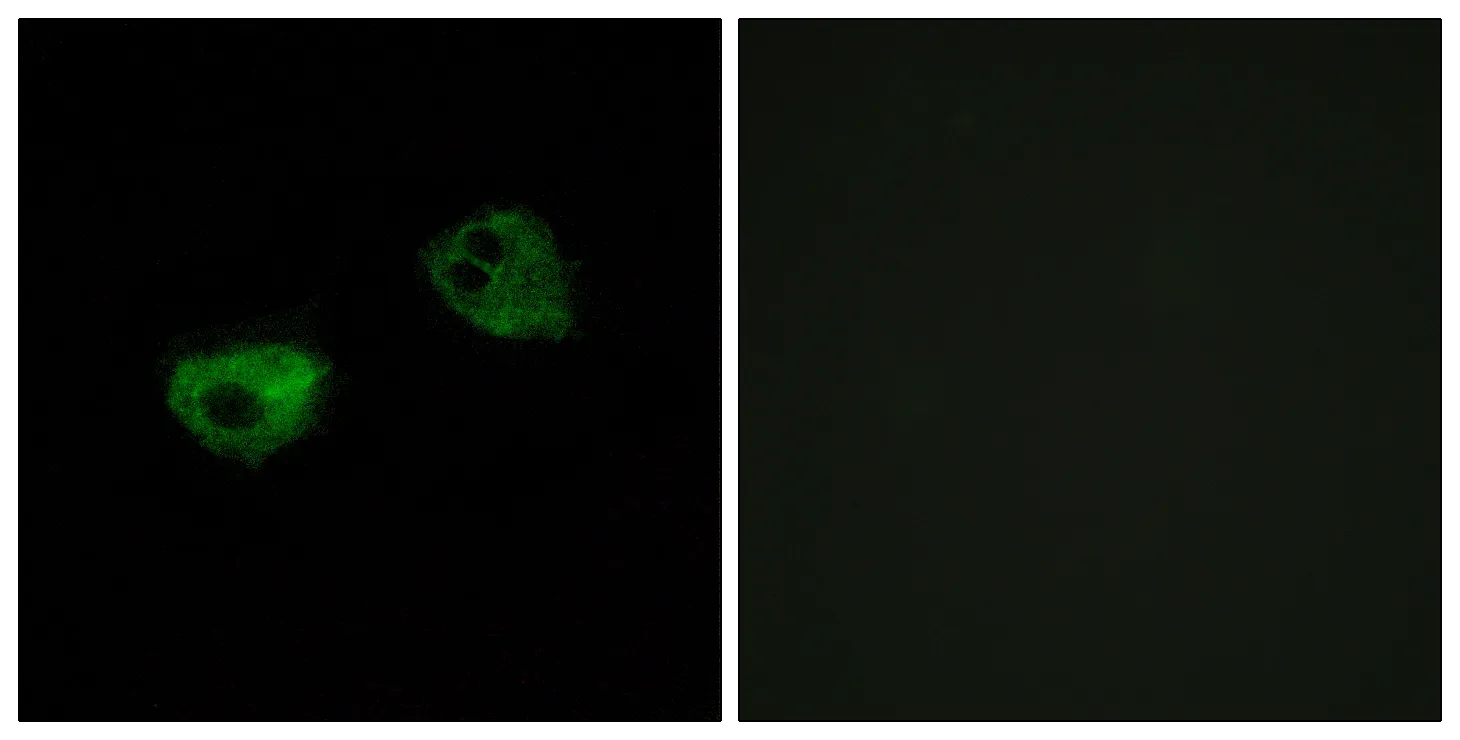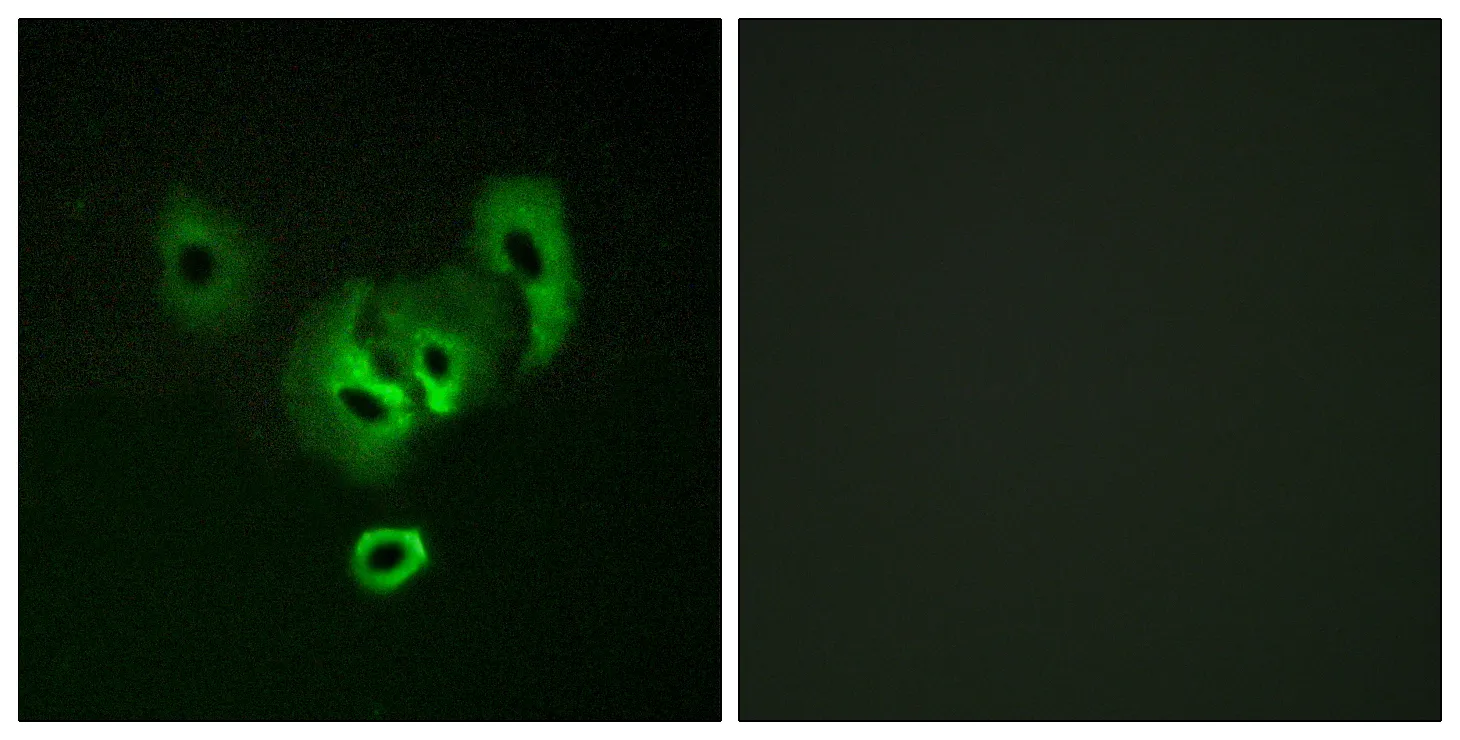Summary
Performance
Immunogen
Application
Background
function:Inhibits human amidolytic and kininogenase activities of tissue kallikrein. Inhibition is achieved by formation of an equimolar, heat- and SDS-stable complex between the inhibitor and the enzyme, and generation of a small C-terminal fragment of the inhibitor due to cleavage at the reactive site by tissue kallikrein.,miscellaneous:Heparin blocks kallistatin's complex formation with tissue kallikrein and abolishes its inhibitory effect on tissue kallikrein's activity.,PTM:The N-terminus is blocked.,similarity:Belongs to the serpin family.,subunit:Monomer and some homodimers.,tissue specificity:Expressed by the liver and secreted in plasma.,function:Inhibits human amidolytic and kininogenase activities of tissue kallikrein. Inhibition is achieved by formation of an equimolar, heat- and SDS-stable complex between the inhibitor and the enzyme, and generation of a small C-terminal fragment of the inhibitor due to cleavage at the reactive site by tissue kallikrein.,miscellaneous:Heparin blocks kallistatin's complex formation with tissue kallikrein and abolishes its inhibitory effect on tissue kallikrein's activity.,PTM:The N-terminus is blocked.,similarity:Belongs to the serpin family.,subunit:Monomer and some homodimers.,tissue specificity:Expressed by the liver and secreted in plasma.,
Research Area






